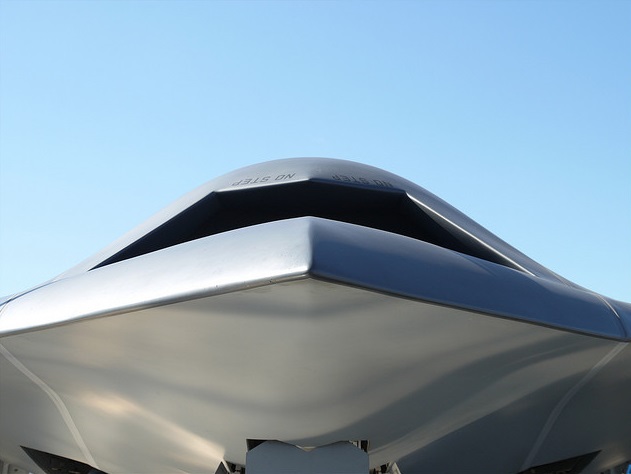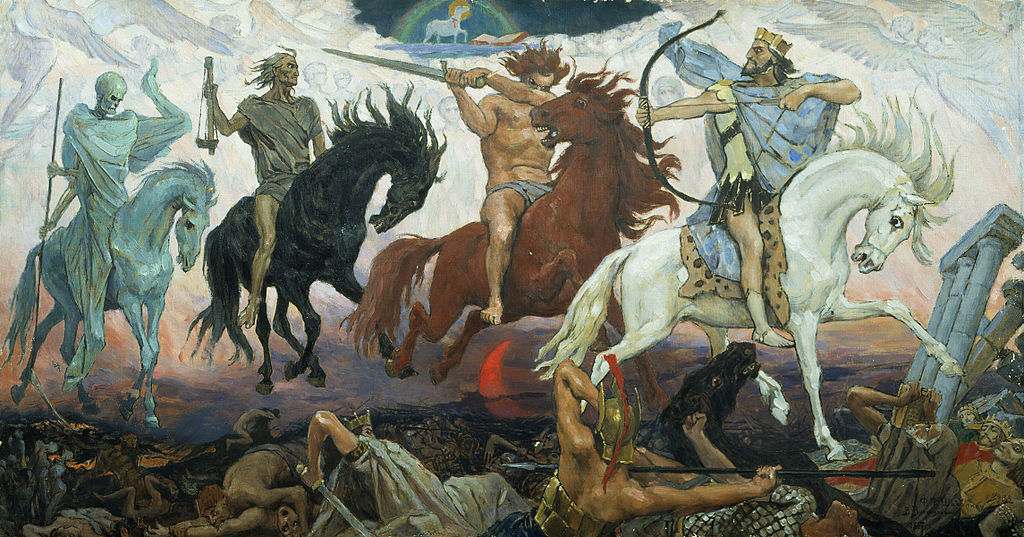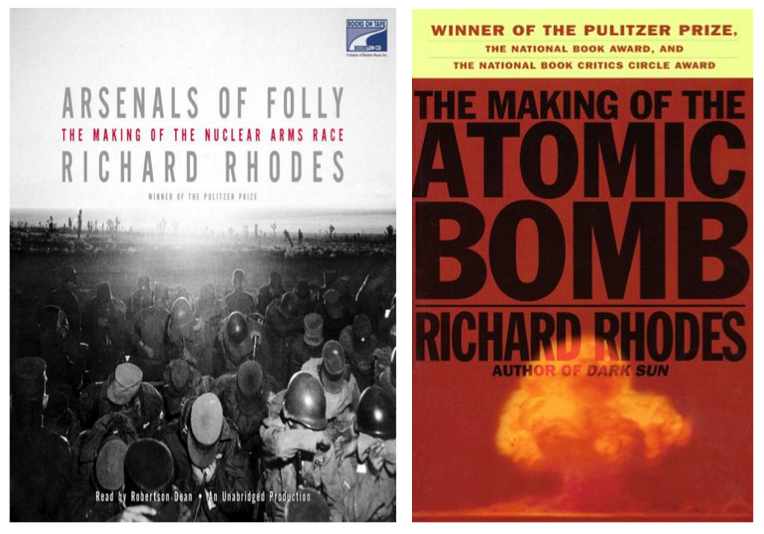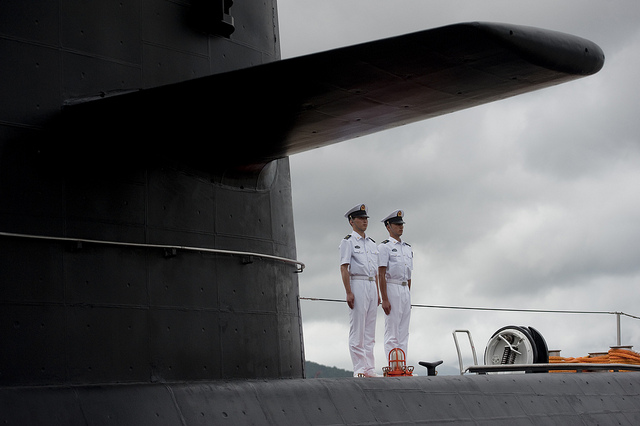The strategic and moral shock of war in the modern age

In his first autobiography, My Early Life: A Roving Commission, Winston Churchill set down a timeless formula for thinking about war odds: however sure one might be of victory, there would not be a war ‘if the other man did not think that he also has a chance’.
Churchill’s lesson for us is that war is an intrinsic and unrelished feature of the human condition. Therefore, we are faced with the grim burden of calculating the chance of war realistically, no matter how much we might naturally yearn for peace. Preparations for war have to be made as those calculations dictate, recognising that we still always have to deal with what Churchill called the ‘unforeseeable and uncontrollable events’ of war.
Churchill did not believe that war should be avoided ‘at all costs’. Likewise, Carl von Clausewitz did not counsel the reflexive avoidance of war. In the continuation of policy by other means that he described in On War, wars are fought in the pursuit of objectives that cannot otherwise be attained. He cautioned us to look beyond the emotional dimension of war, but rather to treat it as an instrument of policy—a risky, chance-determined one.
These insights teach a lesson that endures in our age. If two sides are in deep disagreement on an issue—to the extent that war is in prospect—the fundamental question is this: if either, or both, expect to prevail in a war with relatively low costs, or costs that are bearable, or costs that outweigh the dangers of peace, then war is likely, even if it is not relished. If both sides genuinely wish to avoid war, it will not occur. Rather than being paralysed by the ‘irrationality’ and ‘senselessness’ of war, we should focus on its instrumentality, and the ways in which powers calculate the odds of war, and act on those calculations—often by taking military risks for perceived prizes and advantages, or to avoid harms.
Unfortunately, too few of us think like this today—even where such thinking should reign supreme, such as in defence bureaucracies, amongst national security staffs, and even in strategic and defence think tanks. It is not that we should glorify war. On the contrary, we should abhor it. However, in abhorring war, we have fallen into a post-modern fallacy that war is a tragic, primordial practice, best left behind, like cannibalism. This prevents us from thinking about war rationally.
It is to be admired that the glamour of war has faded. The European powers that went to war in 1914 were militarised societies, where waging war was central to the prestige of the state. Clausewitz and Churchill were of that age. With the ‘civilianisation of the state’ over the course of the last century, as argued by James Sheehan in The Monopoly of Violence: Why Europeans Hate Going to War, political leaders are now measured on their ability to deliver well-being and prosperity, and not their ability to wage war. As politics has become more domesticated, war has been dethroned as the central function of the state. Unfortunately, China, Russia, Iran, and North Korea, amongst others, have not yet being ‘civilianised’. For them, war is not an aberration.
This idea of war as an aberration—a human and yet also inhuman experience—was explored by Erich Maria Remarque in All Quiet on the Western Front. War’s atavistic violence was stunningly captured in the novel and in the two film adaptations. Today, the idea that ‘war is the enemy’ is a Hollywood trope, entrenched in the 1990s after the end of the Cold War. In Crimson Tide, the executive officer of the US ballistic missile submarine (played by Denzel Washington), argues in a wardroom debate about the morality of nuclear weapons that Clausewitz was wrong. He argues that while the purpose of war is to serve a political end (per Clausewitz), the true nature of war is to serve itself. In a nuclear world, ‘…the true enemy is war itself.’
Richard Overy has written on why such thinking is wrong-headed, arguing that war has a long history, and therefore a long future: Why War? (published in 2024). He critiques the idea that war is an aberration by analysing why it has been, and will continue to be, an instrument to achieve very human ends. Of course, it is in our common interest to seek to prevent war by whatever means of diplomacy, risk reduction, crisis management, and peace building that we can bring to bear, especially in a nuclear age. At the very least, we should seek to remove the pretexts for war, which are often confused for its causes, and avoid misperceptions.
However, we cannot start from the premise that war is to be avoided at all costs. There lies the path of self-deterrence, which ruthless aggressors will always exploit if it suits their interests and ambitions. The better path is to do everything possible to change the calculation of the aggressor as regards their odds of victory, whether by way of military rearmament, the building of deterring alliances, the strengthening of civil defence, and so on. This suite of measures must include the credible prospect of the aggressor being struck by offensive counterstrikes, as Israel’s enemies are again learning to their cost.
Unfortunately, in the West—wishing to avoid war at all costs, and treating war as ‘unthinkable’—we are self-deterring. President Xi Jinping has long made clear that for China war is a legitimate instrument of policy in the pursuit of the ‘great rejuvenation of China’, central to which is Taiwan’s subjugation. The only credible threat to peace in Asia is an unchecked China that holds this view. Xi is calculating his odds for victory. His calculation of China’s prospects, and his reading of United States and allied resolve, will be the critical factors in determining whether peace holds.
If he perceives that the dangers of peace outweigh the costs of war, and that risking war would be preferable to living with an unacceptable status quo, then the chances of war are increased, even if his preference would be to achieve a ‘grand bargain’, while preparing for a war that he would probably prefer to avoid. He will be emboldened to take increasingly aggressive actions that might risk war not because he wishes to embark on a war for its own sake, but because he is likely to judge that the US and its allies and partners will, in the interests of avoiding war, give him the space that he needs to grasp the prizes that he seeks.
How would China’s domestic economic and social woes factor in his thinking? It might suit Xi and his brand of nationalist Marxism to impose wartime sacrifices on the Chinese people—including those that would arise from sanctions and allied economic warfare—in the interests of consolidating regime authority and perhaps even its survival. When the 21st National Chinese Communist Party Congress takes place, probably in October 2027, when it is likely that Xi will seek a fourth term as General Secretary, at the age of 74, what better report could he provide to the Party than the ‘great rejuvenation’ had occurred by way of the ‘return’ of Taiwan to the motherland? Ominously, the PLA will celebrate the 100th anniversary of its founding in August 2027.
As I have explored elsewhere, it is likely that we will be surprised by a foreseeable war in the Indo Pacific. We are likely to have ample strategic warning. Even so, we are likely to be taken operationally by surprise, depending on the effectiveness of Chinese deception and misdirection. On the latter, we need to be watchful of the ‘Joint Sword’ series of PLA exercises. They are being undertaken to test and train the PLA, and to exhaust and attrite Taiwanese capabilities, but also to put in place a veil for a sudden naval blockade or quarantine, or the seizure of the smaller Taiwanese offshore islands, or a direct airborne and seaborne assault on Taiwan. Xi’s choices regarding Taiwan could take a number of different forms and be sequenced in a number of different ways. A full-scale invasion of Taiwan should not be thought of as the inevitable first move.
Taiwan’s own actions will have a bearing on these calculations, especially if Taiwan significantly stiffens its asymmetrical anti-invasion capabilities. US actions will have an even more decisive bearing. US willingness to shore up Taiwan’s capabilities, enhance its own forward presence, disperse its forces (including to northern Australia), harden its facilities, and continue to build regional deterrence with allies and partners, would decisively affect Xi’s calculations. Xi would also have to calculate the actions of others, such as Japan, South Korea, Australia, and possibly NATO, whether collectively or by way of responses by individual powers such as France and the United Kingdom.
Or other contingencies might play out first, such as a short, sharp border war with India or Vietnam, or an engineered clash at sea with the Philippines or Japan. Relatively limited clashes, or even ‘small wars’, such as these would have the demonstration benefit of announcing the arrival of China as serious and bloodied military power, without necessarily triggering a significant US military response, and risking World War Three. Historical precedents would be the Spanish-American War of 1898, and the Russo-Japanese War of 1904-05.
If an entirely foreseeable war occurs, history will place the principal blame on Xi Jinping. Some of the blame will also fall on ‘decision failure’ in Washington and elsewhere, including Tokyo and Canberra, because if Xi is not deterred from making war, it will be because his calculations will not have been sufficiently changed to the point where he decides that war would be disadvantageous.
To adapt the phrase used by Richard Betts in Surprise Attack: Lessons for Defence Planning, the ‘fog of peace’ will likely see policymakers explain away and not act on the warning signs—having a bias towards diplomacy, an incapacity to appreciate the attacker’s incentives to take risks, and a predisposition to being deceived by deception and misdirection (thinking that ‘surely no one would actually embark on a catastrophic war’). Of course, it might be that the US decides that its vital interests are not sufficiently engaged, and that going to war with China would not be worth it, other than in the direct military defence of the US.
We need to independently consider the odds of a US-China war. War will not occur as an inevitability, or in accordance with a timetable. War is far too contingent. Rather, it is likely that we will experience nerve-wracking crises, with a major war being the least likely scenario, but likely enough to be terrifyingly credible. For planning purposes, we should assign the following probabilities to three scenarios over the course of 2024-30:
—A crisis similar to the Cuban Missile Crisis of 1962: at least 50 per cent;
—A military clash between US and Chinese forces involving an exchange of fire, followed by rapid de-escalation: at least 30 per cent;
—A major war between the United States and China: between 10-20 per cent.
If we accept these odds, even vaguely, then the tempo and visible signs of our preparations should be already evident. They are not.
In thinking about these odds, we should put out of our mind the convenient idea of ‘war by accident’, which was explored last year by Kori Schake in her paper ‘The Exculpating Myth of Accidental War’ (published by the Johns Hopkins School of Advanced International Studies, July 2023). Schake argued that the idea that war happens by accident creates a bias towards self-deterrence where the United States and its allies and partners are likely to avoid certain strategies and operational tactics out of concern about being drawn into a war with China through ‘accident’ or ‘misadventure’.
No incident is ever likely to lead to automatic escalation without deliberate choices being made by political and military leaders, who would otherwise find ways to avoid a war if they wanted to. It is difficult to find a historical instance of war occurring as a result of sleepwalking, blundering or stumbling. Aggressors pursue policies and undertake actions that risk war in a calculated, knowing fashion, because they judge that the sought-after prizes of war exceed its perceived costs, they assess that strategic advantages cannot be obtained through peaceful means, they fear a weakening of future prospects, and they calculate that the defenders will fold relatively easily and quickly. Aggressors (and defenders for that matter) may well miscalculate and misjudge the reactions of others, but that is not to say that such actions and reactions are ‘accidents’. Often what is unintended is the duration and the bloodiness of the ensuing war, as Geoffrey Blainey wrote in The Causes of War (1988, third edition).
If an Indo-Pacific war comes, it will be a strategic and moral shock. We will be operationally surprised by occurrences in the field, and strategically shocked that a way had not been found to avoid an ‘unthinkable’ war through reason, and agile diplomacy, such as middle powers in the region banding together to somehow stave off such a conflict, which appears to be Australia’s policy for dealing with the credible prospect of war. Having placed our bet on the noble cause of peace, we will not have the military capabilities (where we are at least a percentage point of GDP below our required ‘fighting weight’), the alliance warfighting structures, the operational plans and preparations, and the civil defence and national cyber strategies in place to deter attacks, absorb blows, and strike back as required.
Morally, we will be shocked by the irrationality of such a war (thinking, ‘but war is the true enemy, how did it come to this?’). Will we have the moral clarity and strength to calculate the cost of peace, and the risk of yielding to an adversary who is prepared to use war as an instrument to impose their will? For a free people, going to war is an uneasy and difficult compromise, which forces us to grapple with our love of peace and our conscience on the one hand, and the risk of being coerced and subjugated on the other.
Chinese cognitive warfare, waged over TikTok and the like, will seed significant doubts and anxieties amongst the people, complicating an already complex moral question. Responding to such cognitive warfare will not be a matter simply of pursuing technically sound strategies to counter disinformation and the like. It will also require those who lead in the ‘civilianised state’ to make the moral case for war. Odds are, we will be tested soon enough. If we are to be ready, strategic and moral rearmament will be necessary.








